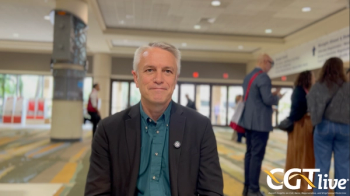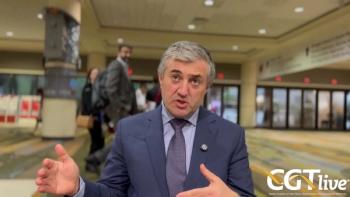
Working to Enable Gene Therapy for Cardiovascular Disease
Jonathan W. Weinsaft, MD, chief of cardiology and professor of medicine at Weill Cornell Medical College, discussed research the center is doing in the space.
Gene therapy research is growing in relatively newer fields to the technology, including cardiology. Some recent news in the space revolves around Verve Therapeutics’ VERVE-101 and VERVE-102 gene editing therapies for heterozygous familial hypercholesterolemia (HeFH), the former of which was recently deprioritized in favor of the latter, next-generation therapy.
CGTLive® spoke with Jonathan W. Weinsaft, MD, chief of cardiology and professor of medicine at Weill Cornell Medical College, to learn more about research that Weill Cornell is engaged in with the goal of bringing more novel therapies to patients. He touched on a few different programs the center is working on, including gene therapy for Friedreich Ataxia and cardiomyopathies and basic research looking deeper into cardiovascular disease.
CGTLive: What cardiovascular gene therapy research is Weill Cornell working on?
Jonathan W. Weinsaft, MD: The focus of much of our work at Weill Cornell is developing new approaches to both diagnose and assess people with known or suspected heart conditions and using new technologies and surveilling the responsive of the heart to therapies. The goal is improved patient outcomes for for the many communities that we serve, and in parallel with that to provide state of the art cutting edge care to really transform cardiovascular outcomes. We've done clinical work, research, teaching, in an array of areas that are related to gene therapy. We're particularly excited at the ability of genomics, proteomics and transcriptomics to transform our understanding of cardiovascular pathophysiology, and to inform our ability to provide more personalized treatments for cardiovascular conditions. We’re actively exploring the power of gene therapy to treat patients with genetically mediated cardiomyopathy or genetically mediated heart failure. We're particularly excited by the potential of gene therapies to address rare conditions. We're doing active research funded by NIH, focused on Friedreich ataxia, which is a rare condition that can affect both the neurologic system as well as the cardiovascular system. And in fact, cardiovascular clauses are a leading cause of death in that patient population.
We've also worked across the spectrum with the potential of gene therapy, and gene editing technologies to affect and to treat an array of conditions, whether it be cardiovascular amyloid in hypertrophic cardiomyopathy, potential in rare, genetically mediated cardiomyopathy that is related to myosin mutations, as well as more common conditions. Certainly, there's the potential as we begin to learn more regarding the pathophysiology of atherosclerosis sclerosis or cardiovascular blockages for gene targeted therapies to treat atherosclerotic plaque towards the goal of plaque stabilization or plaque progression. We're working actively in all of those spaces both on a clinical front as well as a basic science front, and we're approaching it via several avenues.
In our basic science laboratories, we've got researchers at Weill Cornell trying to understand the molecular pathogenesis of genetically mediated cardiovascular conditions, including cardiomyopathy arrhythmias and other serious events. Our imaging laboratories are trying to develop why and working towards developing new imaging technologies, to better understanding and surveilling the response of the heart to those gene therapies. We're also leveraging the power of artificial intelligence or AI in that space, so as to have some more sophisticated trappers of gene therapy and response. And finally, in our clinical programs, where we have a major footprint throughout New York City, both in the Upper East Side as well as lower Manhattan, as well as New York, Presbyterian Queens and Brooklyn Methodist Hospital, so as to really to engage with communities in need, in patient populations in need, of state of the art, cutting edge, cardiovascular care. As part of that we want to leverage the power of research and leverage the power of academic developments in cardiology so as to really introduce and rollout state of the art advances that are developed at our center and other centers nationwide.
When we think about cardiovascular disease, we think about common conditions, such as atherosclerotic heart disease, such as cardiovascular arrythmias, including atrial fibrillation, which is a common cause of morbidity and mortality, that increases with aging in these augmented and descending cardiovascular risk conditions. Heart failure as a condition is a broad umbrella for which we are only beginning to understand the tip of the iceberg in terms of the pathophysiology, and potential treatments.
What are your thoughts on gene editing in the cardiovascular space?
Weinsaft: We're very engaged in research in that area. We have an active NIH grant looking at the potential of gene therapy for Friedrich ataxia/ Obviously, there are others working in that space in the rare disease space, such as cardiac amyloid hypertrophic cardiomyopathy, which is not a rare disease, but it's certainly less common. I think gene editing technology, whether it be CRISPR technology or other related approaches, has markedly enhanced our ability to target given pathogenic genes and perform editing, so as to correct deficits and hopefully improve patient outcomes. We're beginning to see that in the cancer space. We haven't yet seen it as a transformative approach in the cardiovascular space. I see it as a longer-term horizon, 5 to 10 years away. But obviously, the advances over the past decade have been impressive. And I am optimistic about its potential long term.
From a holistic standpoint, the potential of CRISPR gene editing has been a technology that is increasingly recognized across medicine and over the cardiovascular space. In general, I would also make the case that as we get better at genetic characterization including whole exome sequencing, and understanding the contributions of polygenic alterations, and the interaction between genotype and phenotype… all of these things are going to feed our understanding of how disease progresses and develops and will allow us to target given underlying mechanisms.
This transcript has been edited for clarity.
REFERENCE
Verve Therapeutics Announces Dosing of First Patient in Heart-2 Phase 1b Clinical Trial Evaluating VERVE-102. News release. Verve Therapeutics. May 7, 2024. Accessed May 14, 2024. https://ir.vervetx.com/news-releases/news-release-details/verve-therapeutics-announces-dosing-first-patient-heart-2-phase
Newsletter
Stay at the forefront of cutting-edge science with CGT—your direct line to expert insights, breakthrough data, and real-time coverage of the latest advancements in cell and gene therapy.
















































